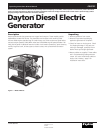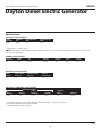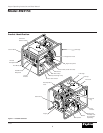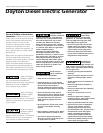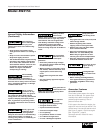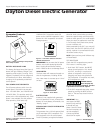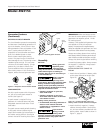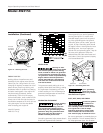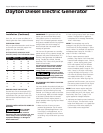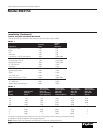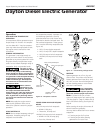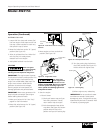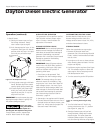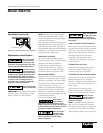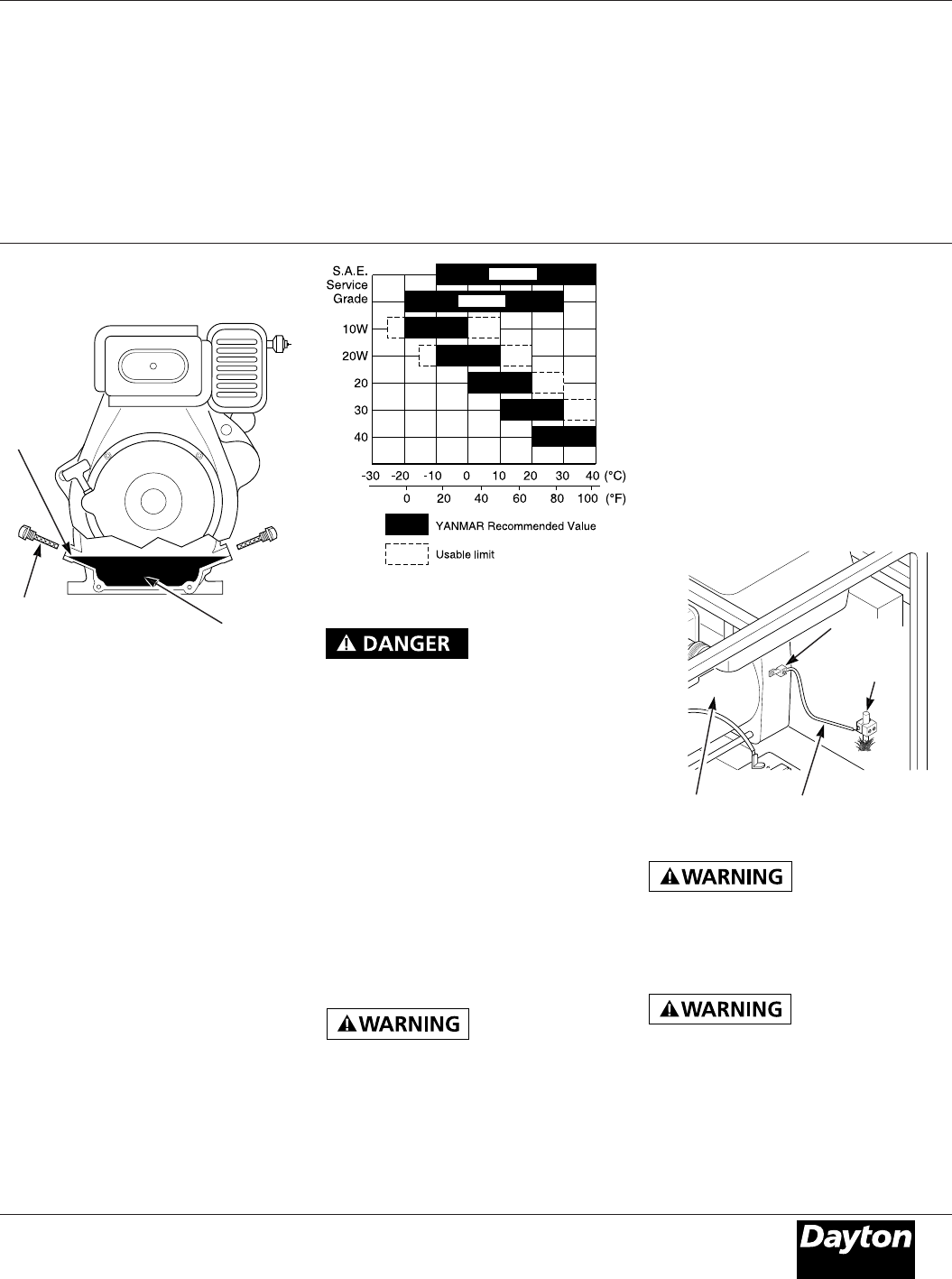
Dayton Operating Instructions and Parts Manual
9
Model 4W315C
Version B - For Reduction G016.J
®
107358
Oil Level
At Top Of
Filler Neck
Dipstick
Oil
Figure 14 – Checking Oil Level
Installation (Continued)
Lube Oil Capacity:
4W315C1.74 qt.
10W 30
20W 40
For a grounding
point, do not use
metal pipe being used to carry combus-
tible materials or gases.
ENGINE LUBE OIL
Nothing affects the performance and
durability of your engine more than the
lube oil you use. Using inferior oil or not
changing oil regularly increases the risk of
piston seizure, piston ring sticking, and
accelerated wear of cylinder liner, bearing
and other moving parts. Your engine life
may be seriously shortened. Yanmar
recommends CC/CD oil of API engine
service classification, stock number 4ZF20.
Always use oil with the right viscosity for
the ambient temperature in which you are
using the engine. Use the chart below
when choosing your engine oil.
VENTILATION
Use only in well-
vented areas. Make
sure area has plenty of free-moving,
fresh, outside air. Never run generator
in an enclosed or confined area. Never
run generator inside occupied building.
Engine exhaust contains poisonous
carbon monoxide gas. Overexposure
will cause loss of consciousness and
will lead to death.
This generator needs cooling air to run
properly. Never block free-flowing, cooling
air to generator. Overheating will occur
without cooling air. This will damage the
generator. Keep generator at least three
feet away from any object.
Ground Wire
Alternator
Ground Lug
Copper or
Brass
Grounding
Point
Figure 15 – Grounding Generator
GENERATOR GROUNDING
You must properly
earth-ground
generator before starting. This will
help guard against deadly electric
shock. Only use grounded plugs with
generator. Only use grounded exten-
sion cords. Only use three-wire or
double-insulated power tools.
Grounding generator helps prevent electric
shock from a ground fault condition.
Locate ground lug on end of generator
housing (See Figure 15). Attach a #10
stranded-copper ground wire to ground
lug. Drive grounding point into ground.
Grounding point can be a stake, ground-
ing rod, or pipe. Grounding point should
be copper or brass. Attach ground wire to
grounding point. You must supply the
ground wire and grounding point. They do
not come with generator. Follow the
National Electrical Code and all state and
local codes. Consult your power company
or a licensed electrician.
DUST, DIRT, RAIN, AND SNOW
Do not use genera-
tor outdoors in
rain or snow. Do not use generator
near standing water or snow. Do not
use if generator is wet or damp.
Operating generator in these condi-
tions increases the risk of electrocu-
tion. Severe injury or death can occur.
Do not use generator in extremely dusty or
dirty conditions. This will severely affect its
life. Keep generator clean. Do not allow



